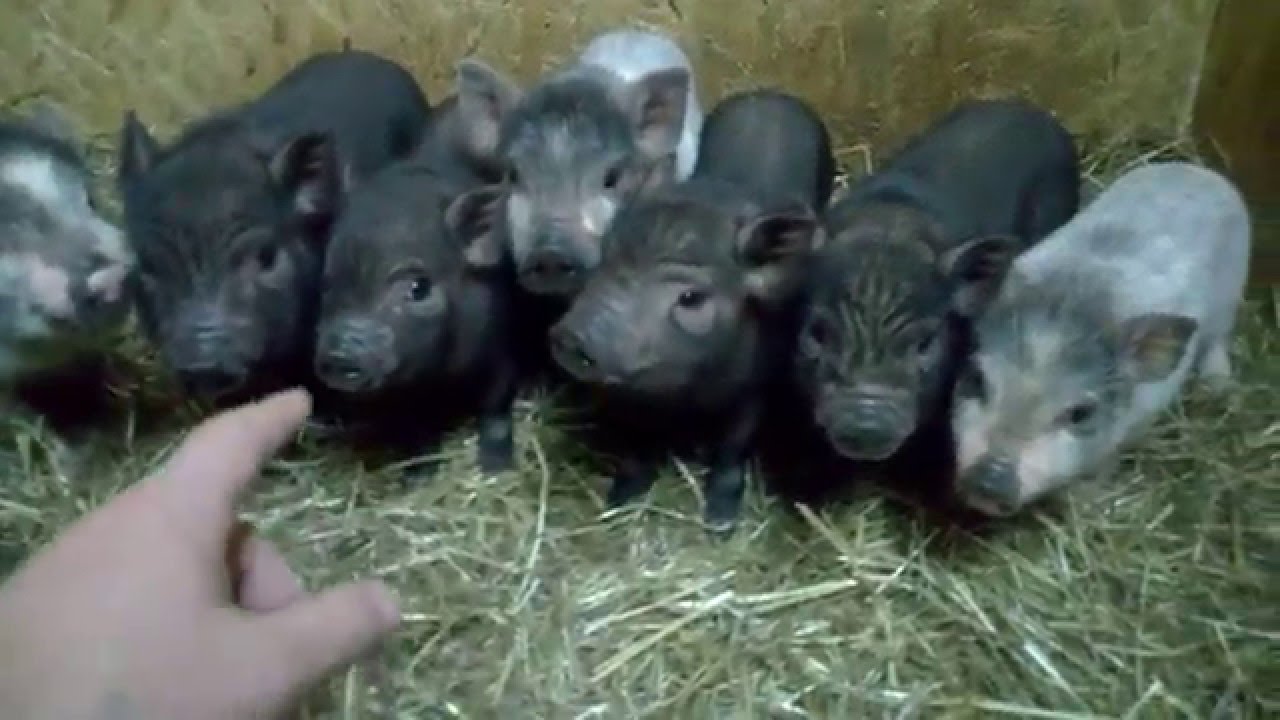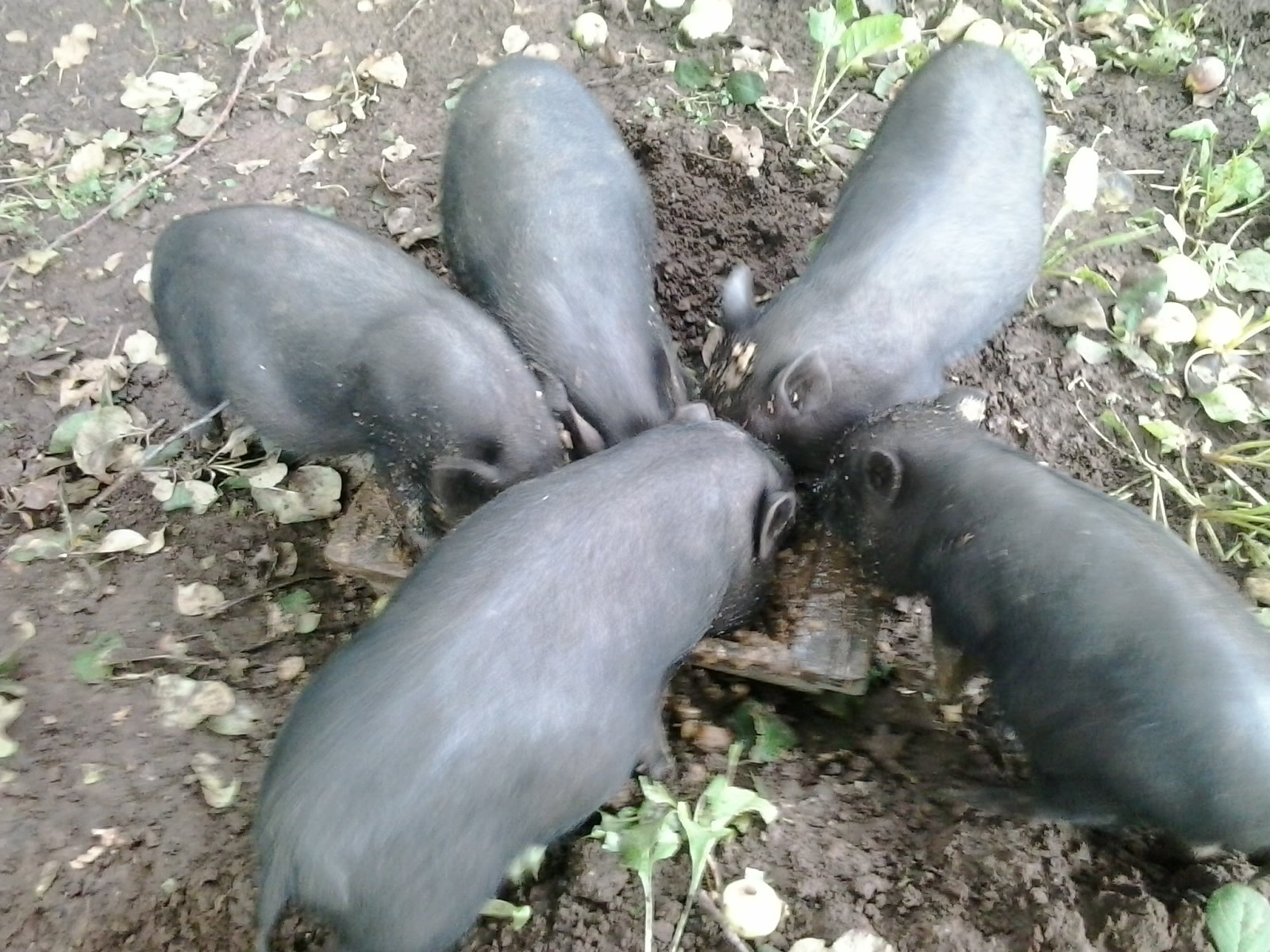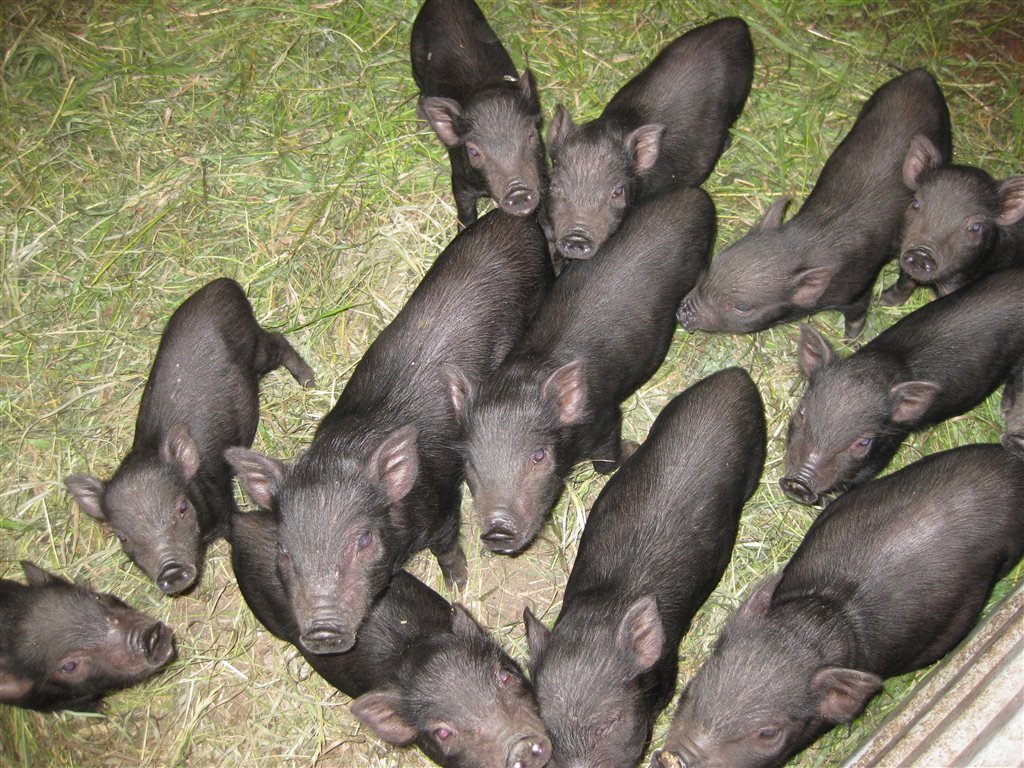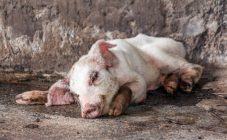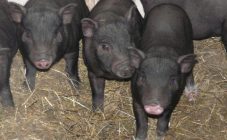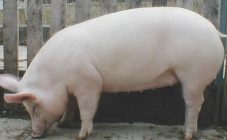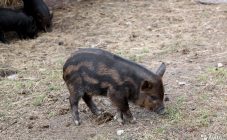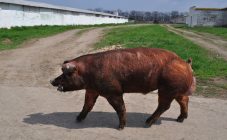Content:
Vietnamese piglets attract the attention of breeders due to their small size, early maturity and unpretentious rearing. They have become an excellent alternative for those farmers who do not want to raise ordinary large white pigs on their farms, or for livestock breeders who want to provide their families with a supply of lard and meat without incurring high costs.
History
Vietnamese pot-bellied pigs were first bred in Southeast Asia. Only in 1985 did they spread to other countries and other continents. The pigs got their name due to the fact that they were imported to other continents from Vietnam. The animals found their fans very quickly, because in a short period of time they were already known not only in Europe, but also in distant America.
To date, scientists continue to work on improving the breed. They set out to improve the performance of piglets, increase their size, and increase the percentage of muscle mass. Vietnamese pot-bellied piglet came to Russia relatively recently. Due to inexperience and lack of knowledge, rumors began to spread among farmers that several breeds of Asian animals were being raised in our country. However, it turned out to be one kind. A little later, it became known about another dwarf breed, which was used as an ornamental animal and was called a mini-pig.
External distinctive features
The characteristic external features make it possible not to confuse Vietnamese piglets with other breeds. They began to be called Vizlobryukhim due to the fact that already at the age of one month the belly of the pigs sags. In adult gilts, the belly may touch the ground. Their colors can be varied, but spotty and resinous black individuals are most often found.
Black-bellied piglets may have an unusual, slightly flattened muzzle. They have a very wide back and short legs, so adult pigs can grow large, but at the same time short. Boars have a dense cover of bristles. There are black lop-eared pigs, although most often their ears are small. Vietnamese pigs are famous for their ability to quickly gain weight, which averages up to 80 kg. However, if the owner decides to feed the pet for a longer time and creates the right diet for him, then the weight of the animal can reach 150 kg.
How to feed Vietnamese piglets
The main mistake of inexperienced farmers is that they try to organize feeding and create a diet for Vietnamese pigs in the same way as for ordinary whites. However, marbled Vietnamese piglets eat not only different foods, but also with a different frequency of meals. They need to be constantly fed throughout the day, and not limited to two meals a day. Vietnamese pigs have a much smaller stomach than a normal white pig, so their food is digested faster.
Black piglets (Vietnamese pot bellies) are herbivorous representatives of the animal world, therefore the owner must plan their diet exclusively from plant products.
They are fed:
- corn;
- hay;
- pumpkin;
- apples;
- pears;
- zucchini;
- forbs.
Beets and straw should not be given to Vietnamese pigs. They prefer fresh hay. The new menu should be tailored to suit the season and feed availability.
If the ultimate goal of keeping an animal is to obtain bacon, then it should not be overfed. The ideal weight for such piglets is considered to be about 100 kg, they gain it in about 9 months. For individuals raised mainly for meat production, the content of barley and corn in the diet should not exceed 10%.
Breeding Vietnamese piglets
Fertilization and farrowing in Vietnamese piglets take place without any particular difficulties. Sexual maturity of females occurs 4 months after their birth. The beginning of the hunt in them becomes obvious from restless behavior, refusal to eat. Vietnamese piglets are very rarely sick, therefore, such symptoms are a sign that it is time to let the pig near the boar. Also, in females, the genital loop swells, and characteristic discharge appears. However, such signs can be false. To check if reproduction can be carried out, it is worth leaning lightly on the croup. If the pig stands calmly and motionless, then it is definitely in heat and ready for fertilization, otherwise it will have to wait a little longer.
During farrowing, it is advisable for the owner to monitor the process so that unwanted complications do not arise. Iodine, threads, cotton wool and scissors should be kept ready in order to be able to cut the umbilical cord if necessary. The first signs of a Vietnamese pig's early farrowing are restless behavior, a lowered abdomen, and formed milk lobes. By the time of delivery, the room must be cleaned, only hay and water are left in the pigsty. A newborn pig requires additional attention, it is wiped from the accumulated mucus from its mouth and patch, and it is also made sure that each of the cubs receives a portion of colostrum during the first hour of life.
Breeding Vietnamese piglets is easy, profitable and even fun. From one farrowing, up to 10 babies are obtained, gradually this figure can increase, and at one time the mumps already leads 12 pigs. One female is able to do 2 farrowings per year.
Care of Vietnamese piglets
Taking care of Vietnamese piglets involves, first of all, setting up a pigsty. Since the animals grow up small in size, even in a small room, several adults can be kept. How many pigs fit in a given area depends on their age and size.
The shed is built both brick and wooden. To simplify the cleaning process, the floor can be concreted by covering the pigsty in a separate part of it with a boardwalk so that the pets do not freeze. It is advisable to divide a large room into small pens, in each of which several pigs should be placed. It will also make it possible to separate sows and their offspring.
Between the partitions it is worth building a passage so that it is convenient to distribute food and carry out cleaning. The room is well ventilated to prevent oxygen deficiency. During the cold season, the optimum temperature should be maintained so that the piglets do not overcool. This is especially true if a recently farrowed pig lives in a pigsty, for which it is undesirable to lie on a cold floor or in a cold room.
There is a recommendation by experienced pig breeders to let Vietnamese pigs go for a walk in summer to give them the opportunity to graze. Also, this breed of pigs is very fond of taking mud baths, which must also be taken into account by the owners. In hot and dry weather, this is required both for cooling and for scaring off blood-sucking insects.Such conditions for raising animals are often created in the middle zone (Volgograd, Moscow, Kursk regions, Moscow and the region).
To prevent an adult domestic hog from hunting every month, it is recommended to castrate it. This is done only if the individual is raised for slaughter. This is a very important condition, since the castrated boar becomes less aggressive, the meat obtained from it is devoid of unpleasant odor. The animals are castrated at the age of 1.5 months.
Advantages and disadvantages of the breed
Like any other breed, Vietnamese piglets have their merits and demerits.
The list of benefits is quite impressive:
- They gain weight quickly and become sexually mature. The pigs are ready for mating at the age of 6 months, and the domestic pigs are ready for mating at the age of 4 months.
- Cultivation and reproduction does not require much trouble. Females do an excellent job of caring for the offspring, so a minimum of effort is required from the owner.
- They have excellent immunity. Vietnamese piglets hardly get sick and do not need numerous vaccinations and vaccinations, they easily adapt to different climatic conditions.
- From Vietnamese pig breeds, very tasty and tender lard and meat are obtained, and carcasses are cut quickly and easily.
- Female Vietnamese piglets are highly fertile and bring up to 12 pups at a time.
- The pig has a genetic memory and does not eat poisonous plants.
- Vietnamese piglets feed exclusively on plant foods, which significantly reduces feed costs.
- The pigs are very clean and organize a sleeping place and toilet in different parts of the barn.
The disadvantages of Vietnamese piglets are very subjective and are determined by the owners individually. Some are skeptical about the color of the animal, others are not satisfied with the small size or a thin layer of fat. However, compared to the advantages, these disadvantages are not so important. Many farmers happily turn a blind eye to them and continue to raise Vietnamese pigs on their farms.
With a responsible approach, pig breeding will help not only provide lard and meat for your own family, but also organize a business, profit from the sale of surplus. In just a couple of years of keeping Vietnamese piglets, you can significantly increase the number of livestock. They do not require much attention to themselves, eat plant foods, and rarely get sick. Even a novice livestock breeder can cope with the cultivation of Vietnamese pigs.
